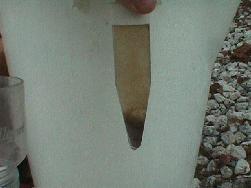Determining The Number of Plankton- Method A
Because of the difficulty encountered in attempts to count all of the different sizes and kinds of plankton species in a sample, we will estimate the abundance of a single type of plankton, the copepod. Copepods are the most abundant and obvious representatives of the surface plankton. We will use the copepod as an indicator species. Copepods have the following general shapes.
MATERIALS:
Petri dish, centimeter grid or centimeter graph paper, dissecting microscope (10x) and plankton sample.
PROCEDURE:
1. Pour your sample (1 ml to 5 ml) into a petri dish. 
2. Determine the area of the dish by using the following formula;
A =
Where: A= number of square centimeters covered by the dish
p
= 22/7D = diameter of dish in centimeters
3. Place the petri dish over a centimeter grid or graph paper with centimeter squares clearly marked. Distribute the sample evenly over bottom of dish.
4. Count the number of copepods (or whatever other organism you are searching for) in any one square and multiply by the total number of squares (area) present; you will then have an estimate of the total number of organisms in the dish. Record this number on your data sheet.
5. In order to determine a more accurate count, select the three squares indicated in
the diagram. This will give an "unbiased" count. To find the average per square,
divide the total number in the three squares by three. Multiply your average by the total
number of squares (area) in the dish to obtain an estimate of the total number of
organisms in your dish.
-------------------------------------------
Example: 66 copepods were counted in the 3 grids. The area of the dish was 63.5 cm2
Total number of organisms = number counted in 3 grids x no. of squares
3 (area)
= 66/3 x 63.6
= 1397 copepods
----------------------------------------------
6. Compute the total of copepod organisms (or whatever you are finding) in the original concentrated sample; (Plankton ID's)
Q = T x V/v
Q= total copepods passing through net
T = total number of copepods in your sample
V = total volume of original concentrated sample
V = volume of your sample
7. Compute the total number of copepod organisms per cubic meter.
8. Record all information on data sheet.
Introduction - Volume of Sample - Numbers in Sample 1